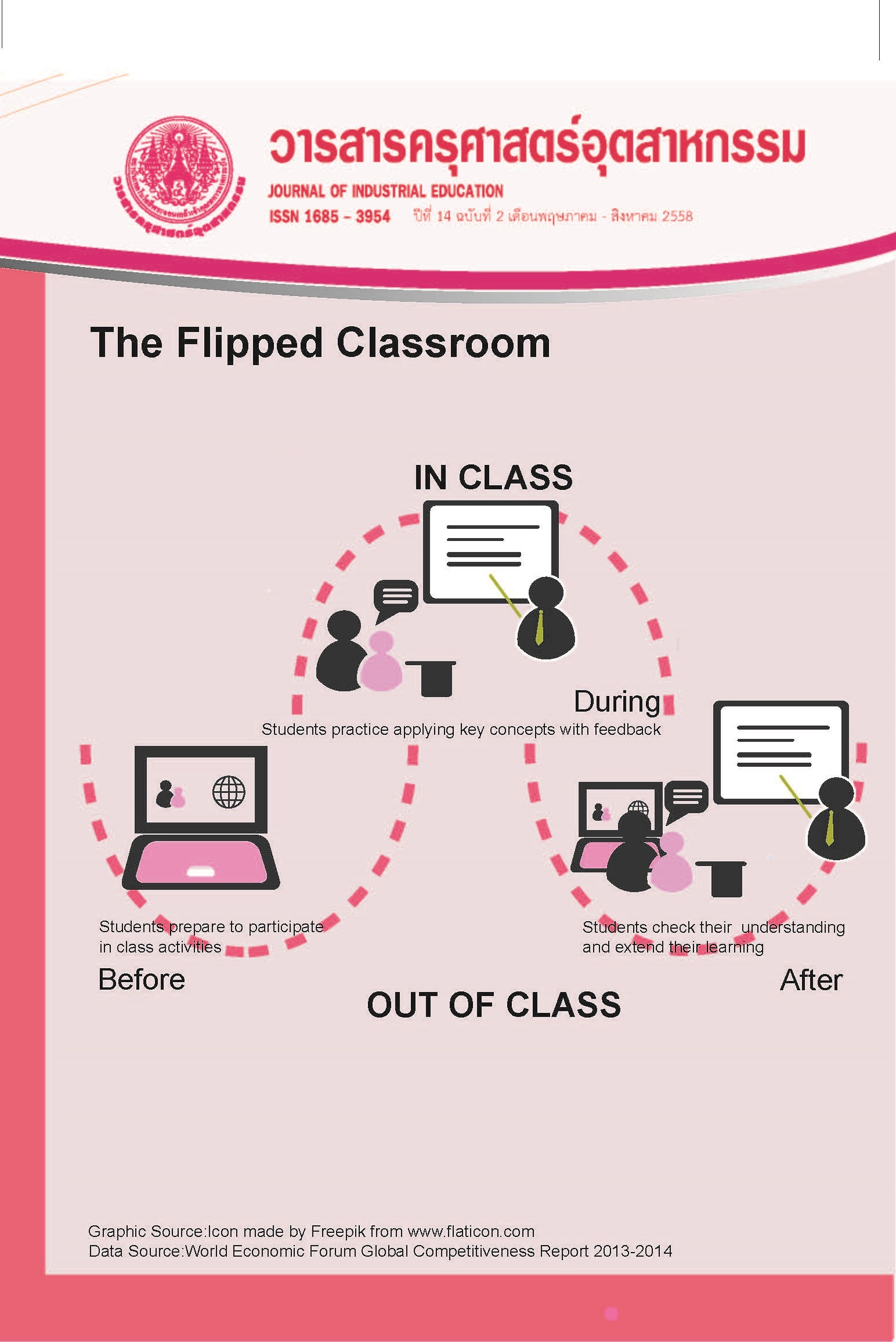Body of Knowledge and Concepts on Learning Management from Thai Teacher TV
Main Article Content
Abstract
This research aimed to study the body of knowledge and concepts in learning management from a Thai Teachers TV program. The sources of data were limited to 60 videos of the Thai Teachers TV program. Content analysis method was employed and frequency was used as statistical tool. Results of the study revealed that from the 60 videos, the important 40 topics of body of knowledge and concepts in learning management were found. The five most mentioned topics were:
1) Questioning and development of students’ thinking skill. The basic technique that encourages students to think is the question. However, teachers can create a variety of activities that promote thinking skills of students. They should give students the opportunity to: ask questions; create their own imaginative ideas, own problems and guess the answer; research what they want to know; comment, discuss and brainstorm with friends; get hands-on experience; get involved in multi-sensory and novel learning; and practice the proper way of thinking (Yonisomanasikara).
2) Using instructional media. The good instructional media does not have to be expensive. The teachers’ creativity is most important, which can transform the ordinary into the effective instructional media. The use of the environment around the schools, such as materials, equipment, locations, resource persons and local places, will make students experience and see the real things. As a result, students will access information and understand the contents to be taught more easily
3) Drill and practice. The good learning is ‘learning by practicing’ (learning by doing). During practicing, students have a chance to plan, think and create interesting questions, solve problem, evaluate their own and classmates’ work, learn the process of working and drawing conclusions on their own. However, during the activities, the teacher will be facilitating and giving advice. In addition, before the class ends, students’ individual practice should be assigned. Consequently, the teacher can know how much their students can learn and which students should be given remedial teaching. Furthermore, drilling and practicing in the real situations or in local community will enable students to see and learn things in various aspects including learning to be a tolerant person.
4) Improving students’ attitudes towards learning and creating a happy learning environment. Students are happy and have good attitudes towards learning when they join the interesting and enjoyable learning activities. For example, they are allowed to sing, ask questions, do things they want to do, experience exciting learning, search for knowledge by themselves, and practice and work with their teacher. Therefore, the teacher should present various learning activities, give time and opportunity to students, teach with a planned sequence, be composed and do not force students to learn too quickly. In addition, the teacher should take care, facilitate, give advice, and be kind and friendly to their students.
5) Arousing students’ interests and stimulating students’ participation. Decorating the classroom to make students feel that they are in a real situation, make teaching and learning more lively. The use of novel learning activities to keep students involved and informing students about the importance of the topic to be learned can make students excited and interested in learning. As a result, students have better learning.
Article Details
"The opinions and contents including the words in papers are responsibility by the authors."
"ข้อคิดเห็น เนื้อหา รวมทั้งการใช้ภาษาในบทความถือเป็นความรับผิดชอบของผู้เขียน"
References
Tungkunanan, P. 2014. A Development of the Administration Model of Teacher Training Center of the Faculty of Industrial Education at King Mongkut's Institute of Technology, Ladkrabang. Journal of Industrial Education. 13(1), น. 37-44.
[2] คณะครุศาสตร์ จุฬาลงกรณ์มหาวิทยาลัยและสถาบันเครือข่าย. 2554. โครงการพัฒนาระบบโทรทัศน์ครู(TEACHER TV): การ ติดตามประเมินผลและประกันคุณภาพ. ค้นเมื่อ 8 เมษายน 2554,จาก https://www.cued-ttv.net
Faculty of Education, Chulalongkorn University and Partnership Institutions. 2011. Development of Teachers TV System Project: Monitoring, Evaluation and Quality Assessment Retrieved April 8, 2011, from https://www.cued-ttv.net
[3] Ornstein, A.C. and Lasley II, T.J. 2000.Strategies for Effective Teaching. 3rd ed.Boston: McGraw-Hill.
[4] Wilen, W., Hutchison, J. and Bosse M. I. 2008. Dynamics of Effective Secondary Teaching. 6th ed. Boston: Allyn and Bacon.
[5] ณรงค์ กาญจนะ. 2553. ทักษะและเทคนิคการสอนเบื้องต้น เล่ม 1. สงขลา: คณะครุศาสตร์ มหาวิทยาลัยราชภัฏสงขลา.
[6] พัชนี ภักดี. 2545. ผลการใช้สื่อในชีวิตประจำวันประกอบการสอนภาษาอังกฤษที่มีต่อความสามารถในการอ่านเพื่อความเข้าใจ ของนักเรียนชั้นมัธยมศึกษาปีที่ 4. วิทยานิพนธ์ปริญญาครุศาสตรมหา-บัณฑิต สาขาหลักสูตรและการสอน บัณฑิตวิทยาลัย มหาวิทยาลัยราชภัฏนครสวรรค์.
Pakdee, P. 2002. A study on the Effect of Using Authentic Materials for English Reading Instruction on the Ability of Reading Comprehension of Matha-yomasuksa Four Students. Master’s Thesis in Curriculum and Instruction, GraduateSchool, Nakhon Sawan Rajabhat University.
[7] ประภาพรรณ เอี่ยมสุภาษิต. 2552. ทฤษฎีการเรียนรู้กับการเรียนการสอน. ใน มหาวิทยาลัยสุโขทัยธรรมาธิราช. ทฤษฎีการเรียนรู้ กับการเรียนการสอน. น. 1-62. นนทบุรี: มหาวิทยาลัยสุโขทัย- ธรรมาธิราช.
Iamsupasit, P. 1999. Learning Theories and Instruction. in Sukhothai Thammathirat Open University. Learning Theories and Instruction. p. 1-62. Nonthaburi: Sukhothai Thammathirat Open University.
[8] เลขาธิการสภาการศึกษา, สำนักงาน. 2553.แนวทางการนำภูมิปัญญาไทยเข้าสู่กระบวนการเรียนรู้นอกระบบโรงเรียนและการ เรียนรู้ตามอัธยาศัย. นนทบุรี: โรงพิมพ์ชุมชนสหกรณ์การเกษตรแห่งประเทศไทย.
[9] Miller, Susan P. 2009. Validated Practices for Teaching Students with Diverse Needs and Abilities. 2nd ed. Upper Saddle River, NJ: Pearson Education, Inc.,
[10] คณะกรรมการการศึกษาขั้นพื้นฐาน, สำนักงาน.2553. แนวทางการจัดการเรียนรู้ตามหลักสูตรแกนกลางการศึกษาขั้นพื้นฐาน พุทธศักราช 2551. กรุงเทพฯ: สำนักงานคณะกรรมการการศึกษาแห่งชาติ.
[11] ประสาท อิศรปรีดา. 2549. สารัตถะจิตวิทยาการศึกษา. พิมพ์ครั้งที่ 6. ขอนแก่น: โรงพิมพ์คลังนานาวิทยา.
[12] สิริพัชร์ เจษฎาวิโรจน์. 2550. การสอนระดับประถมศึกษา 2. พิมพ์ครั้งที่ 2.กรุงเทพฯ: สำนักพิมพ์มหาวิทยาลัยรามคำแหง.
[13] ระวิวรรณ ศรีคร้ามครัน. 2551. เทคนิคการสอน. พิมพ์ครั้งที่ 3. กรุงเทพฯ: สำนักพิมพ์มหาวิทยาลัยรามคำแหง.

